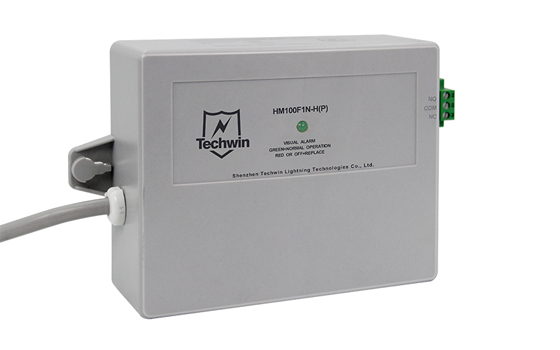Transient Voltage Surge Suppressor (TVSS) is a device used to protect electronic equipment from transient overvoltage, spikes, or surges. With the increasing reliance on network infrastructure due to the proliferation of5G, IoT, and autonomous driving technology, the importance of TVSS is also continuously rising.
The main function of TVSS is to lower the voltage to a safe level and transfer excessive current to the ground, thus protecting electrical and electronic equipment.

There are many factors that can cause spikes and surges, and choosing the correct TVSS device can help prevent equipment damage.
In the UL 1449 standard, the type ofTVSS is primarily determined by its installation location.
Type I TVSS devices are typically installed at the service entrance outside buildings, mainly to protect the main AC power entry. They provide the first line of defense during a surge, reducing the surge strength entering the building.
Type II TVSS devices are installed at branch panels inside the building, providing protection for the distribution panel. These devices typically further reduce surge voltage, ensuring stable voltage entering each branch circuit.
Type III TVSS devices are installed next to the protected equipment, offering branch and equipment-level protection. They serve as the last line of defense for precision electronic equipment, ensuring the equipment is unaffected by residual surges.
Although the TVSS device and SPD Surge Protection Device are both used to protect low-voltage electrical systems from transients, spikes, or surges, there are technical differences between them. TVSS is an industry term, whereas SPD was introduced and formally replaced the term TVSS in the third edition of the ANSI/UL 1449 standard. SPD is now categorized into various types, each suited for different applications and installation locations.
Before the introduction of the third edition ANSI/UL 1449 standard, various terms were used to refer to devices that limit the impact of transient surge events, including surge arresters and TVSS. With the adoption of the new standard,Underwriter's Laboratories officially replaced the term "TVSS" with "Surge Protective Device (SPD).
TVSS devices can only be installed on the load side of the service entrance, whereas SPD devices can be installed on both the load side and the line side, providing broader protection.
To protect sensitive electronic equipment, TVSS devices are becoming increasingly common in residential, commercial, and industrial facilities. TVSS is a voltage-sensitive switch that continuously monitors the AC voltage input and output waveform. Under normal conditions, the device does not respond. However, when the voltage difference between the power source and the protected line is high enough, the switch will close, diverting the transient away from the electronic equipment to protect it.
In simple terms, the purpose of an SPD is to minimize equipment damage and downtime by limiting transient overvoltage before it reaches the protected equipment.
Transient Voltage Surge Suppressor (TVSS) is an important device for protecting electronic equipment from surge damage. With technological advancement and expanding application scenarios, bothTVSS and SPD play crucial roles in surge protection. To ensure the safety of your equipment, it is essential to choose high-quality TVSS devices.
 Benefits of Using Lightning Protection DevicesMarch 1, 2024In today's fast-paced world, where technology reigns supreme, the importance of protecting our electronic devices from potential damage caused by lightning strikes cannot be understated. This is w...view
Benefits of Using Lightning Protection DevicesMarch 1, 2024In today's fast-paced world, where technology reigns supreme, the importance of protecting our electronic devices from potential damage caused by lightning strikes cannot be understated. This is w...view Understanding Your Needs: A Guide to Selecting the Perfect Surge ProtectorMarch 1, 2024In an era dominated by electronic devices, protecting them from power surges is crucial. A surge protector acts as a guardian, shielding your valuable equipment from sudden voltage spikes. However, no...view
Understanding Your Needs: A Guide to Selecting the Perfect Surge ProtectorMarch 1, 2024In an era dominated by electronic devices, protecting them from power surges is crucial. A surge protector acts as a guardian, shielding your valuable equipment from sudden voltage spikes. However, no...view Safeguarding Your Electronics: A Guide to Choosing the Right Lightning ProtectorMarch 1, 2024In today's digital age, almost every aspect of our lives is connected to some form of technology. From our smartphones to our home appliances, we rely heavily on electronic devices to get through ...view
Safeguarding Your Electronics: A Guide to Choosing the Right Lightning ProtectorMarch 1, 2024In today's digital age, almost every aspect of our lives is connected to some form of technology. From our smartphones to our home appliances, we rely heavily on electronic devices to get through ...view The difference of Type1/Type 1+2 SPD and Type 2 SPDAugust 11, 2023TECHWIN surge protectors offer reliable and efficient protection against power surges and electrical disturbances. Our range of surge protection devices includes Type 1/Type 1+2 and Type 2 SPDs, speci...view
The difference of Type1/Type 1+2 SPD and Type 2 SPDAugust 11, 2023TECHWIN surge protectors offer reliable and efficient protection against power surges and electrical disturbances. Our range of surge protection devices includes Type 1/Type 1+2 and Type 2 SPDs, speci...view The IEC standards of SPDAugust 11, 2023IEC standards refer to the International Electrotechnical Commission standards, which are globally recognized and accepted guidelines for electrical and electronic devices. Spd stands for Surge Protec...view
The IEC standards of SPDAugust 11, 2023IEC standards refer to the International Electrotechnical Commission standards, which are globally recognized and accepted guidelines for electrical and electronic devices. Spd stands for Surge Protec...view The Relationship Between Up and in in Surge Protector (SPD)July 8, 2022Shenzhen Techwin Lightning Technologies Co., Ltd has independently successfully developed a series of products: SPD surge protector, power surge protector, power surge protector, signal surge protecto...view
The Relationship Between Up and in in Surge Protector (SPD)July 8, 2022Shenzhen Techwin Lightning Technologies Co., Ltd has independently successfully developed a series of products: SPD surge protector, power surge protector, power surge protector, signal surge protecto...view